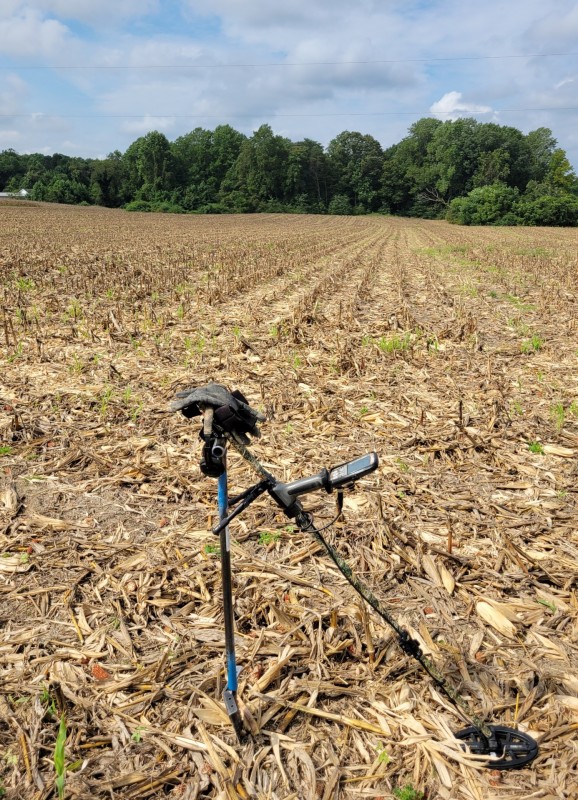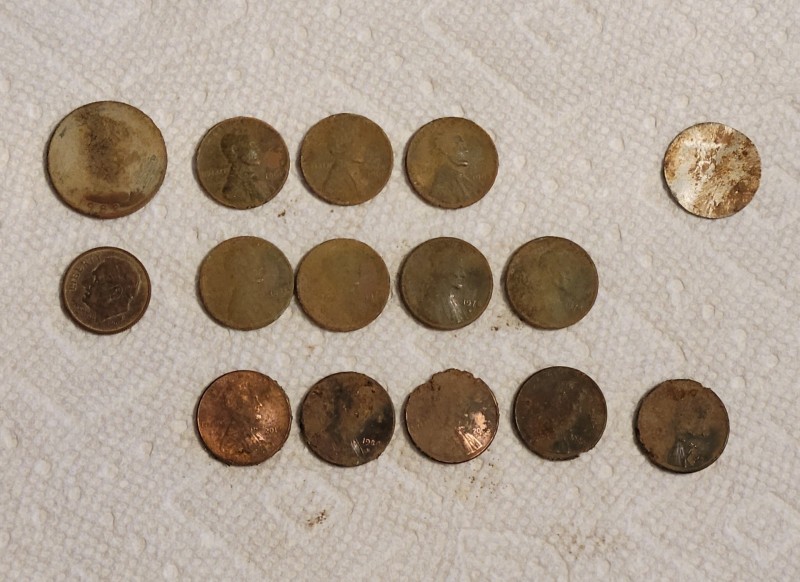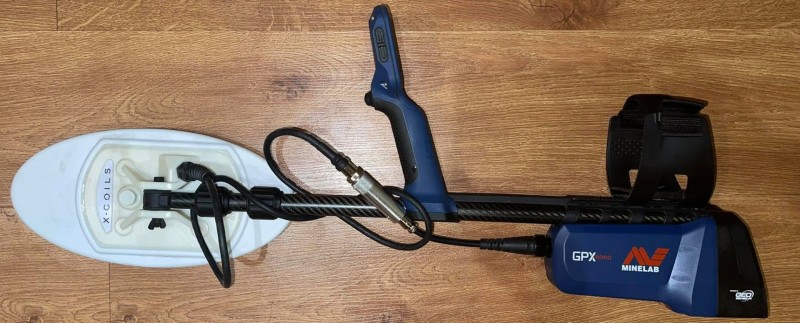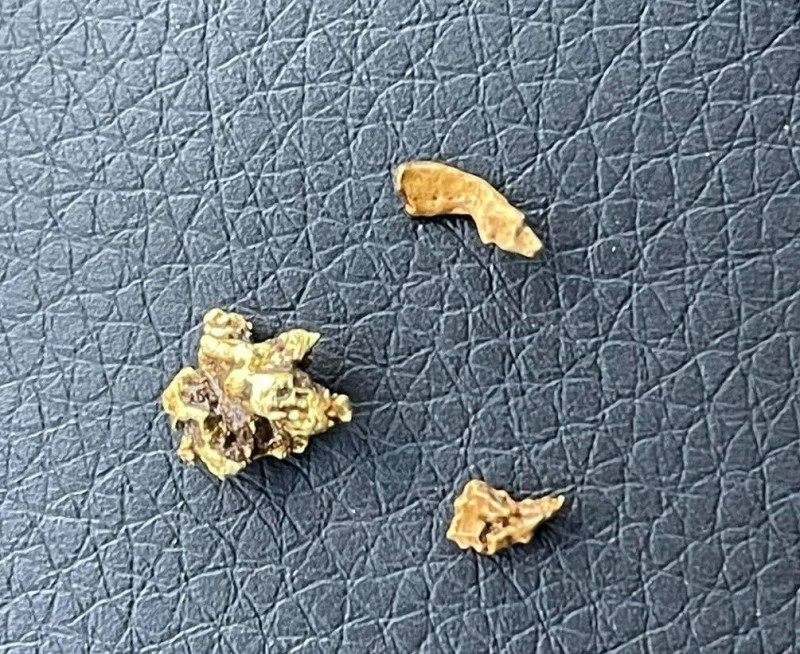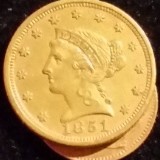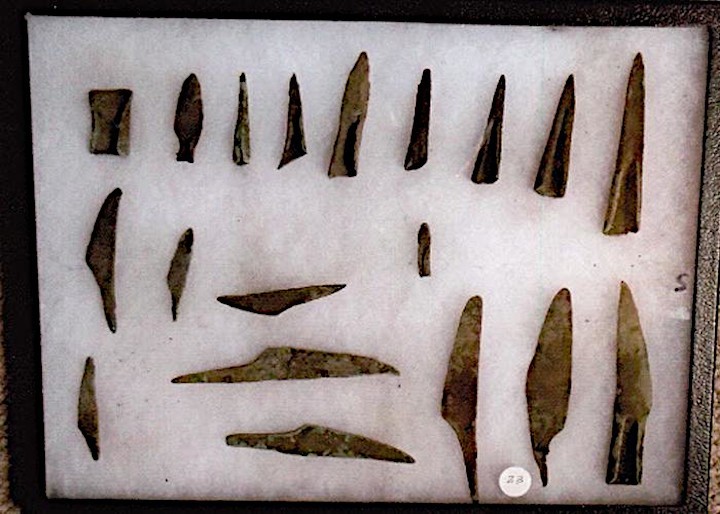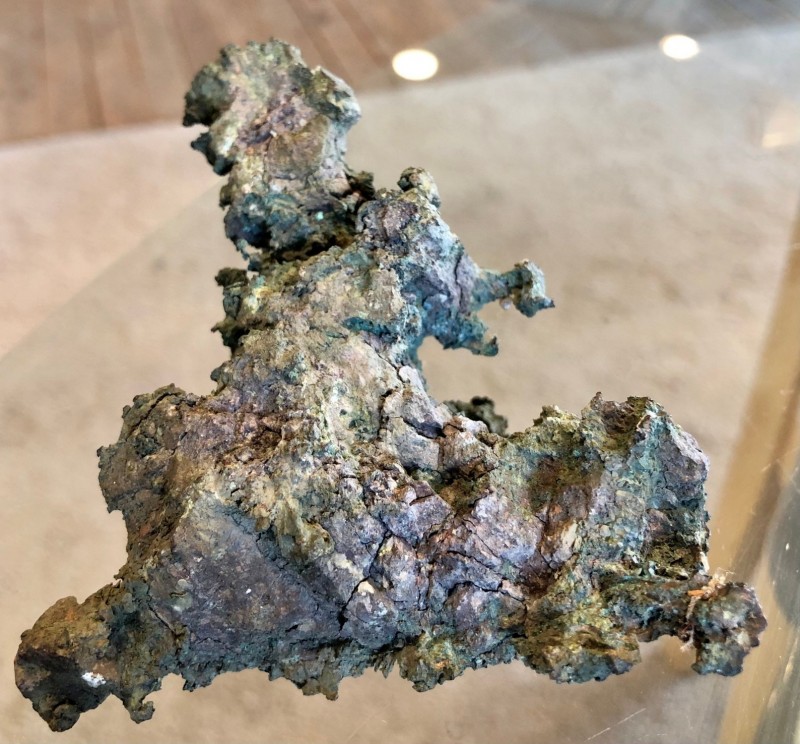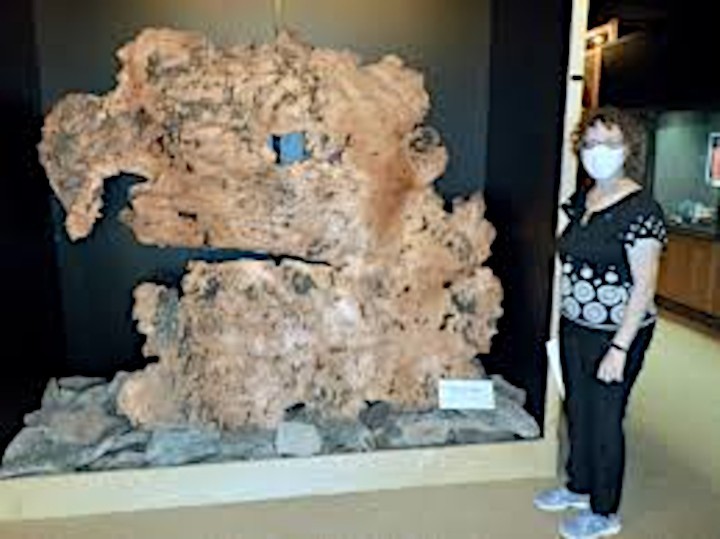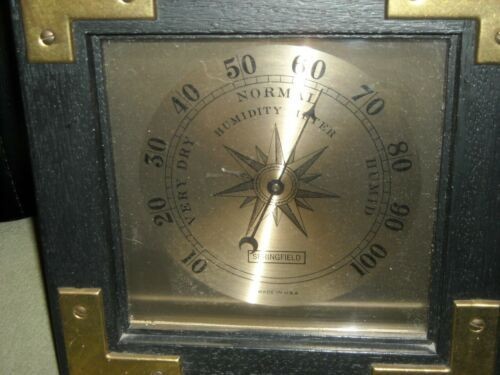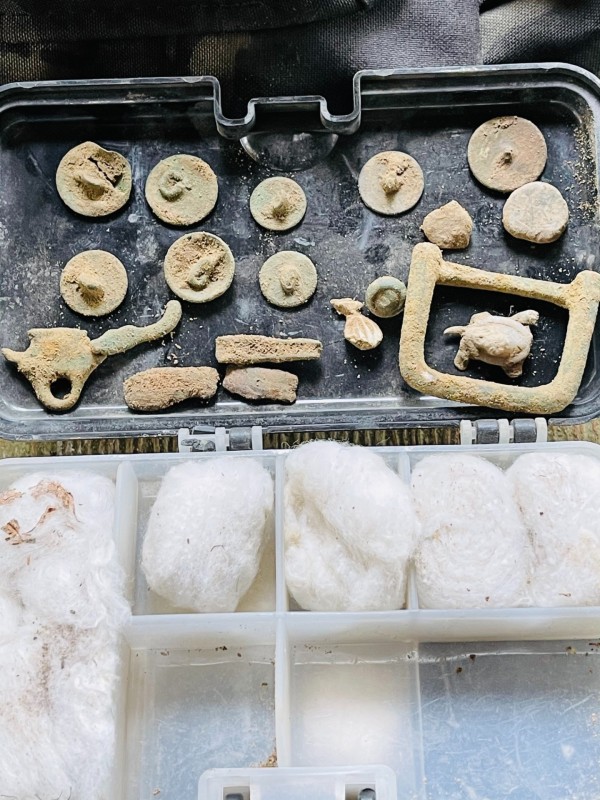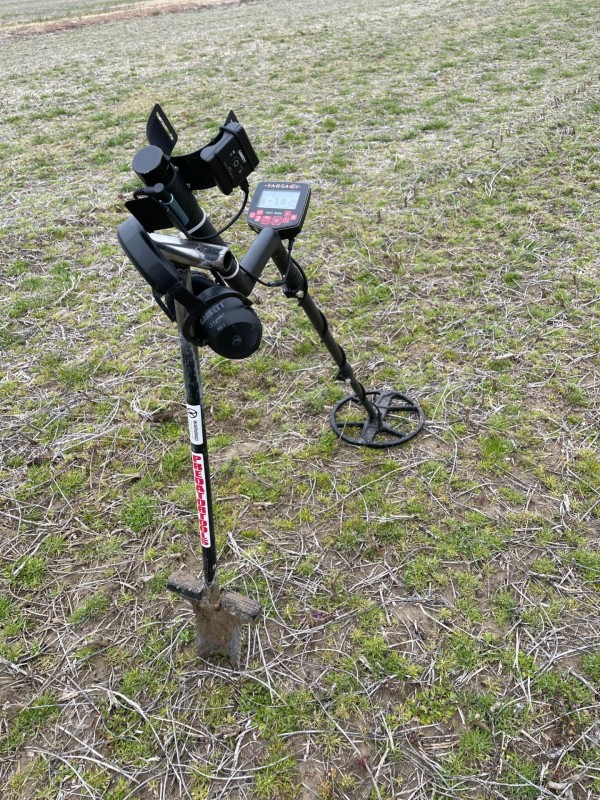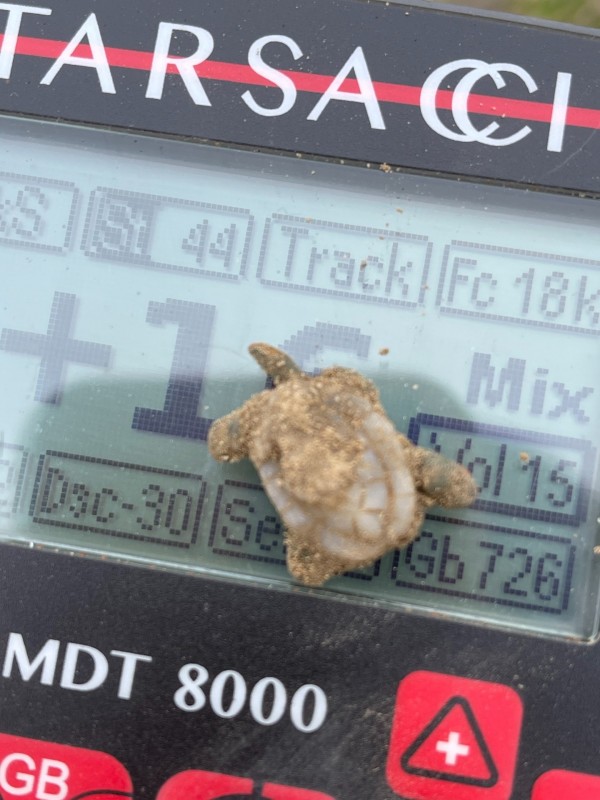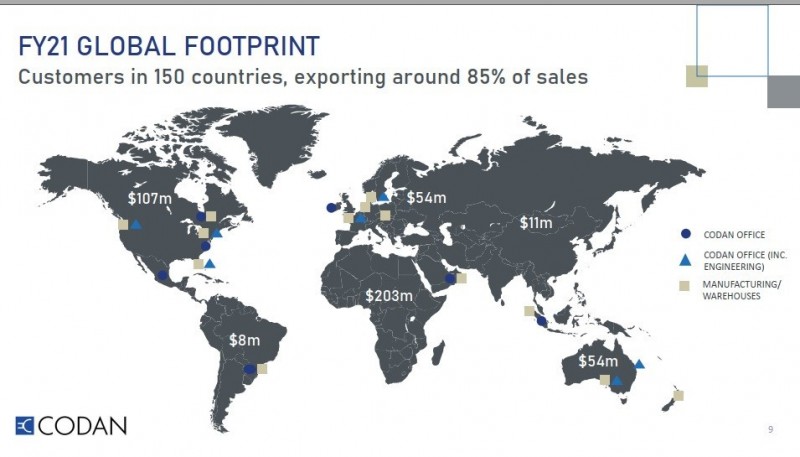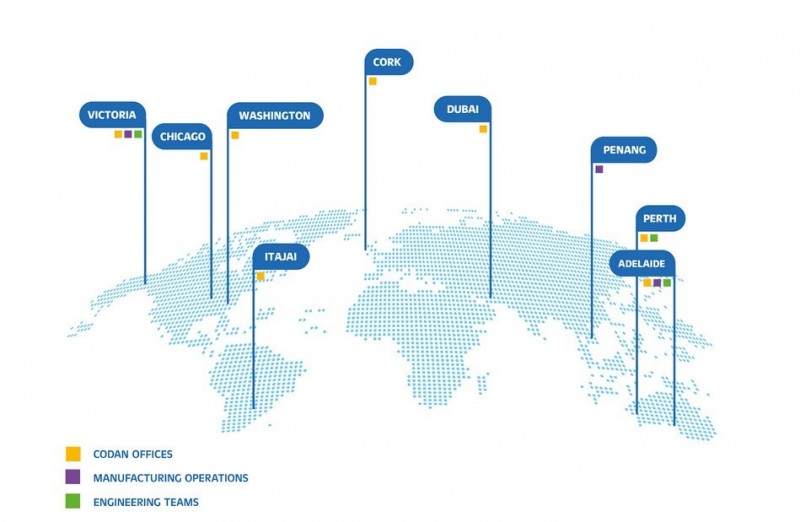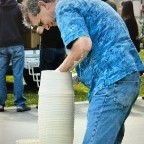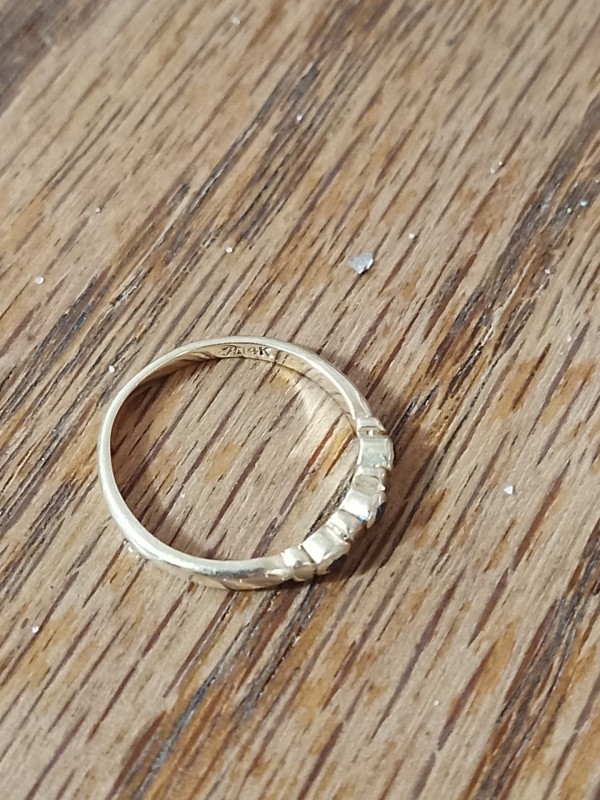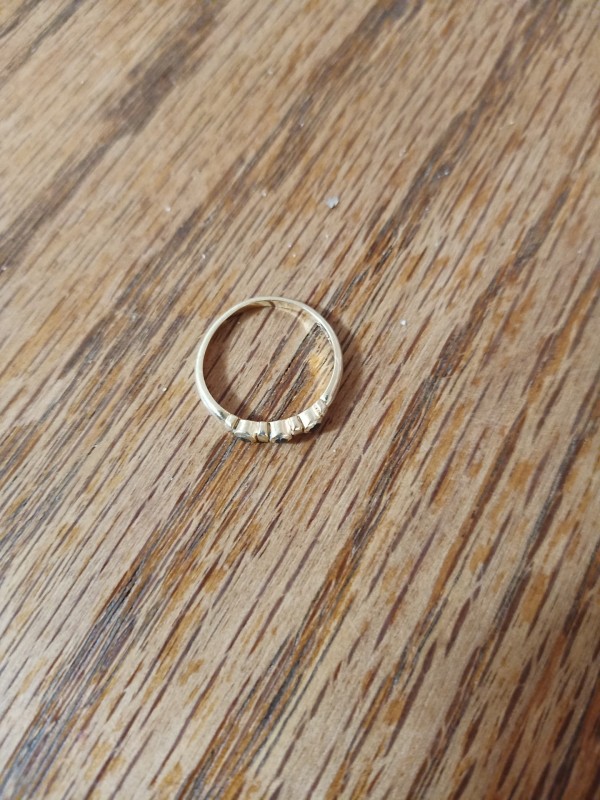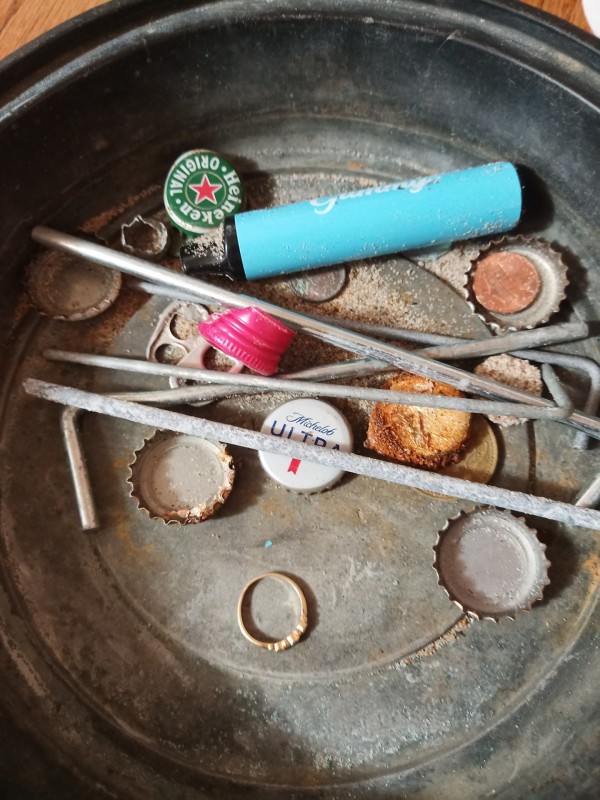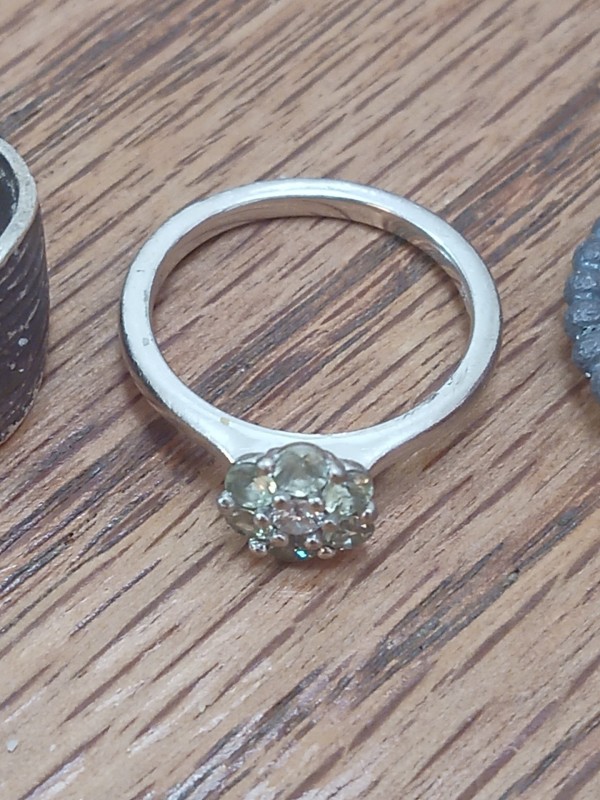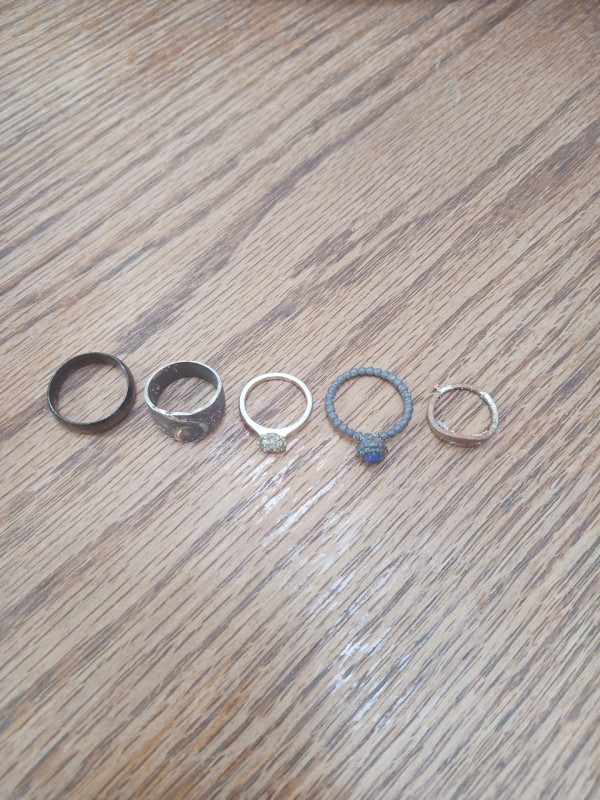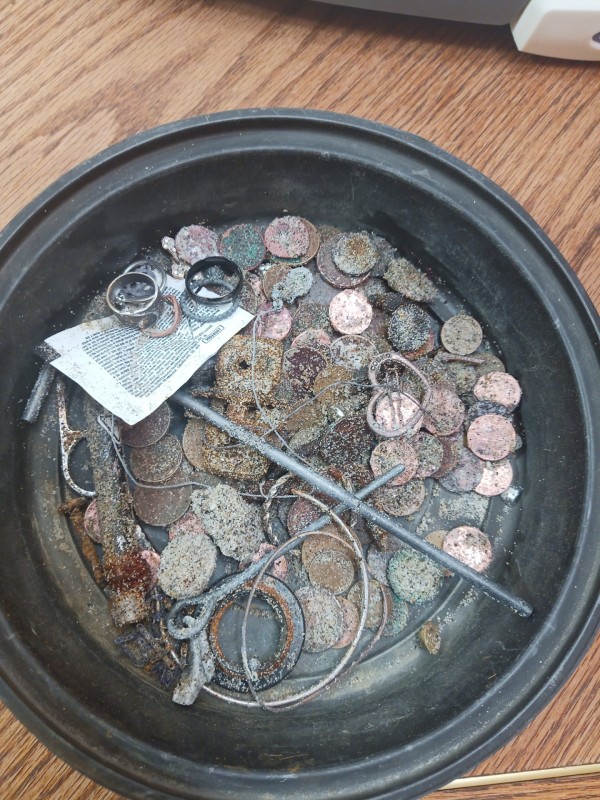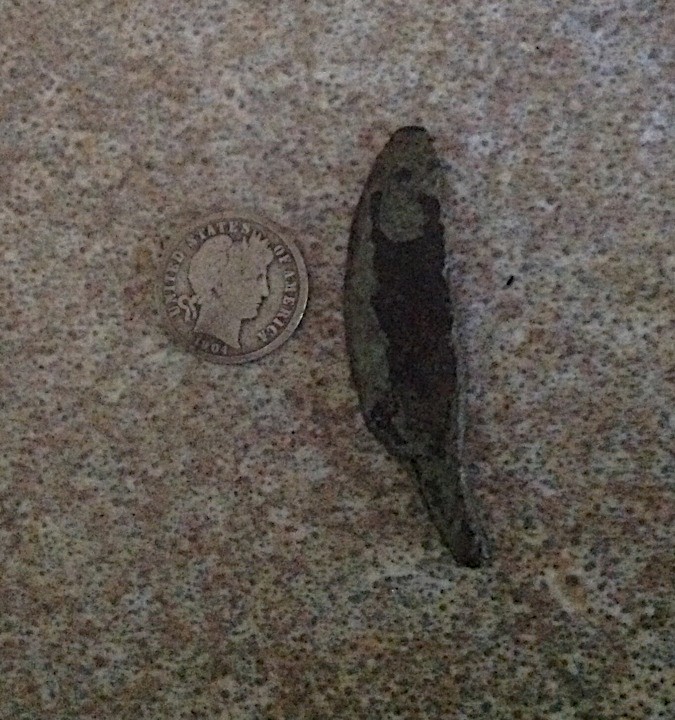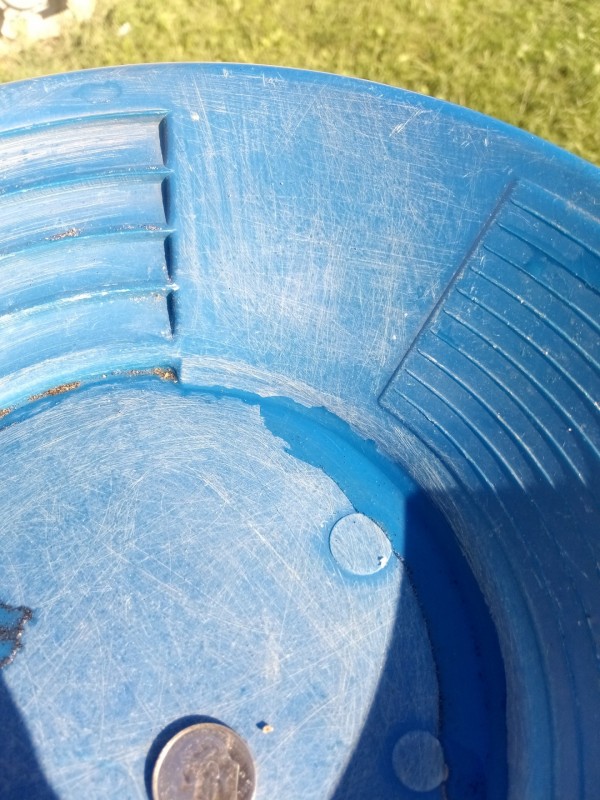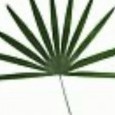Leaderboard
Popular Content
Showing content with the highest reputation on 09/17/2021 in all areas
-
When the waves are pumping you have to keep jumping! I was out for 5 hours last night and got 2 more Gold, 2 more Silver, 30 Quarters and a scull digger surprise. Here is the loot. Here is the good stuff. Here are the rings. Here are some details with 10k/10g/Reads 10 on the Eq 800/15/B1 Here are the rings from the 2 days by day first and by metal second. The gold was 18k, 14k, 10k Thanks for looking.13 points
-
I had a busy day digging targets Took a little road trip and hit a park. Doesn't look like anybody in the town is swinging a metal detector LOL. I dug almost $14 in change, halfway through the day, I quit digging shallow penny signals. I wasn't able to dig any old silver, but, silver is silver. The little silver ring was a nice bonus. I only covered a small section, I'm headed back tomorrow to see what else comes out.11 points
-
Hunted a fresh drop beach Tuesday, now that they are open all day. Tides were low and water was calm. I was able to get into a area where no one had been and got a 14k wedding band. The other two (10k white golds) were closer to shore, no doubt recent drops... (One scoop) When I dug the first, I said gold but never seen a mark and figured it was junk.. until I got to my car and seen both stamped 10k.. The place was hammered good but there were areas still un-hunted after being open a week.6 points
-
Minelab manufactured the X-Terra 50s and X-Terra 70s in Ireland. I owned both models and found them to be as good as any mid level detector made in 2005 to 2008. When the X-Terra 705, 305 and 505s came out in 2009 they were still made in Ireland I think. When the Codan/Minelab deal was signed, Plexus Manufacturing in Malaysia started making selected Minelab detectors in 2010, including some of the X-Terras. I also owned each model for awhile…..305, 505 and 705. They were all made in Malaysia. I did not see a difference in quality or performance. The 705’s prospecting mode was outstanding………buying different coils for changing frequencies and for waterproof/not waterproof along with its kind of nebulous discrimination mode was not so outstanding. I wish I still had my XT70 just for nostalgic reasons, but the Equinox and even the Vanquish to a lesser degree, will detect rings around the XTs from my experience. I think the facility in Cork, Ireland is for European repairs and sales now with no manufacturing.5 points
-
5 points
-
5 points
-
5 points
-
Another great resource for research are old Sanborn Fire Insurance maps. They were made for most medium size towns.4 points
-
I've gotten in 4 sessions (totaling 10.5 hours) in this park since my initial post above. Here's a photo of the coin (plus one jewelry) finds: All but the leftmost column are modern coins. There is one Canadian nickel dated 1982 to the right of the silver lyre. I've only recovered about a dozen Canadian coins (two are fortunately early 20th Century -- silver dime and large cent) in the 1200+ hours since I've been keeping records. Note that now Jefferson nickels are showing up. Previously I had pointed out I had found only a couple. The trend of a high Wheat/Memorial(Cu) ratio has dropped drastically. The LH column contains the 3 Wheaties I found in these recent four sessions. But, two other coins in that column show the age of this site even better than the Wheat ratio. The top coin is a 1937-D (four legged 😞) high grade Buffalo nickel with a very solid full date. And, yes, that Roosie is silver -- 1947-D. The lyre is marked 'sterling'. I don't know if this item has some special meaning -- looks like it was either from a charm bracelet or possibly a neckace. Here are non-ferrous finds that aren't the typical trash (but those shortly): The broken clear glass embossed piece is quite thick (~1/4 inch). Typically glass that thick was not throw-away but meant to be reused. Two gaskets/washers, one copper and the other aluminum. The small brass/bronze bell (which previously contained a iron (alloy) clapper now rusted away) is interesting and I don't know what it was used for. Christmas decoration? The white chunk is lead, which I seldom find that color (from oxidation?). The disk is also lead. The electrical part is a two prong 120 VAC adapter for screwing into a light socket. Everything there looks like mid-20th C., IMO, but could be older (such as the wine bottle glass) or newer (key, electronic lug, cable/conduit clamp). Finally the typical trash -- this was from one 3 hour hunt: The only thing that stands out as old is the square nail next to the screw/bolt in lower right. That could easily be first half of 20th C. Even though modern round cross-section nails were availble back in the 19th C., square nails were still used even as late as the 1930's Great Depression when nothing usable was discarded. So, what are my current thoughts on the history of this site? I'm narrowing it down to two hypotheses -- either the park was active as a park some years before the brass plaque's official date (1974) or the industrial site's workers spent some of the free time (e.g. lunch hours) sitting on the slope behind the building that aerial photos show was there at least back in the mid-50's. I've only scratched the surface (literally and figuratively) of this site. I expect I'll be there many more times before the year is up. Early 20th C. USGS topos show another building which I'm hoping is in a (huntable) cleared area. Stay tuned.4 points
-
Give it a rest Rick. Off topic for starters with the rod thing. But beyond that, there is a line between criticism, and simply being a troll. You have crossed it. You have made it clear since day one you have no interest in owning a 6000, yet have missed no opportunity to criticize a detector you don’t own. It’s the only thing you’ve posted about all summer. It’s a poor look, especially as most owners actually like the machine. So let users speak for themselves, and quit with the trolling. I’d give the same speech to anyone hanging out on threads about a detector they don’t own, and relentlessly attacking it. It’s the definition of trolling, and won’t be tolerated from anyone. However, I totally agree with you about Minelab allowing others to build 6000 coils. It’s been reported that Coiltek will be doing just that. Let’s keep this thread on topic, which is x coil, not 6000 rods. I’ve started a separate thread about the 6K rod issue for owners, who actually know what they are talking about, to weigh in on the subject.4 points
-
Phrunt I dare you to go find a 100 of these 🙂 perfect right angle...looks like a little chair, I seen it laying on the ground and I just had to have it lol ....maybe it was a primitive bottle opener before there were bottles... now thats forward thinking...or a door stop from the colonial era...let your imagination run wild... I guess thats why some people are called rock hounds strick4 points
-
Ok, probably the last time I'll update this. Got some great advice from kac and Chase. I went back to the newer house. I gave the old farmhouse a break because I'm tired of being torn up by poison ivy and chiggers. When I got there I noticed that the farmers had harvested the early corn, leaving this field wide open.I wanted to try my hand at corn stubble hunting, so I walked the field for about an hour, hardly heard any tones unit I got way up in back where there was iron, and got a 34. Pulled a rather new buckle out, I'd say 60s. Still had some of the belt attached. This field is one I haven't hunted, it might produce something but not much. Apparently they pushed some kind of building into the woods but didn't leave anything but nails behind. I'll go back when I can handle hours of nothing. 😀 Went back to the newer house and turned sensitivity down on the Equinox, from my usual 23 to the default 21. Started doing some Old Skool hunting in about a 20x30 foot area in front of the house, swinging low and slow, and really analyzing what the Equinox was telling me. To my surprise I got 14 more coins in about 2 hours. I also dug a Tootsietoy wagon the owner played with as a kid, and found the hammer from an old cap gun. His wife said he would really like it if I saved those old things and gave them to him. Nothing great, a 1982 quarter, memorials from 1961 to 1974, and 5 Zincolns. The coin to the extreme right is really an aluminum slug of some sort. Thought I had silver... Nope. 🤬 I'm going to redo this acre or so more slowly and with lower sensitivity, seems the Equinox is focusing too much on the junk when it's high. Most of the coins were in the same hole as other junk, didn't photograph it today but it was quite a bit. Just getting better thanks to this forum. While I was there a neighbor stopped by and offered his yard (about an acre and a half) and said I can keep it all. His house is newer but it goes right up next to where a really old house was. 😈4 points
-
Ok, I’m going to step in directly here and ask that there is no discussion of adapters, and the issues that can be caused by cutting and modifying things. A Minelab coil needs to be cut open, and the security chip extracted, an inline adapter made, and the coil patched. Then the adapter can be used with both the original Minelab coil, and any x coils. If this sounds a bit tricky - it is. If done wrong severe damage to the detector may result. I’m pretty sure we all get that now, and it simply runs these threads off the rails when it comes up. Warning, warning, Will Robinson, doing this stuff may cause issues! Could blow up your GPX with no warranty coverage, and lots of out of pocket to repair. Or may simply result in erratic and unpredictable performance issues of a more subtle sort. Coils might work great in some ground, and not in other ground. Buyer beware. OK, with that out of the way, let’s focus on what these coils can do in a more positive fashion. I like hearing about even if I’m unlikely to ever go the adapter route myself. I know others are interested also, and the whole point of the forum is information people want. Consider this post the official disclaimer for the thread in that regard. I’ll delete anything further as regards all that if it comes up in this thread. Thanks.4 points
-
I was pretty excited about this one so I couldn't resist posting the video of it, it's a 12x6" prototype test coil being used on the GPX 6000 to find gold, it found 3 bits on it's first run. This was one of my favourite coils on the older model GPX and if I end up with the new GPX it will be a size I'd have to have. It's long sensitive nose was great getting up between the rocks I regularly hunt in. This is purely for information for those interested in following the progress of the coils. These coils are not being sold by them yet, it's in a testing stage and they will require an adapter which involves removing a chip from the original coil. You'll see in the photo the adapter inline on the coil cable which has the chip in it that was removed from the standard mono coil. And the video The 3 bits of gold found while testing it. The one to the left was the one found in the video.3 points
-
Both machines do well in the good soil. I bought the tarsacci for the bad soil. But used it where I’ve hunted with the deus in my local fields. And was very impressed with the target separation in the iron. I pulled 8 colonial buttons from an iron patch that many of us had already detected. The 12 inch coil is a beast in that scenario.3 points
-
I would like to see Minelab come to the party straight away and allow aftermarket coils to be made, with the required chips sold by Minelab. Aftermarket coil makers have a long history of making coils that are far better than what Minelab is supplying as stock. Minelab need to embrace this, because coils will come whether they want them or not. As an aside, I see more and more people complaining about the PITA coil twisting problem on the 6K, with some even resorting to sourcing carbon shafts and building their own lower stems, complete with locking pins ! Very poor for a detector costing 8K ! Rick3 points
-
Most their detectors are made in Malaysia, and parts like shafts and so on come from China. My genuine Equinox replacement shaft came in packaging with shipping documentation of made in China. I guess this is relatively normal in this day and age, what isn't made there? not much! What you're seeing there with that Ebay listing is Chinese manufactured clone components, the Chinese have worked out that selling parts for Minelab detectors can be very lucrative. They sell everything now for many models of Minelab like shafts, batteries, screens, keypads and so on. You name a part they now make it. These will be the same parts they're using in their clone detectors so some parts might be questionable quality. I guess because some of the parts like screens Minelab won't sell you and instead want you to pay the service center to fit them into out of warranty detectors, some people would rather save the money and do it themselves if they're capable of doing so, in that case they source aftermarket parts to do it themselves. Often the labour on a repair can be more than the parts required.3 points
-
This is a super short video I just made showing how the Vanquish acts in heavy iron. It is a Kentucky colonial home site that I've beaten to death over the years with at least 8 detectors. I am always reluctant to recommend the Vanquish because of the iron falsing tendencies. I see new detectorists asking daily on FB groups about why they are getting constant high tones and not finding the perceived target. For parks/beaches it is stable and is an excellent value compared to the Equinox, but a new user will get disgusted pretty quickly if they start swinging in an iron infested site. This was a custom mode based on jewelry. All metal on (chirps even worse with discrimination on), low iron bias, and sensitivity 2 bars down. Please ignore the cow patties 😁3 points
-
Three years ago when I started detecting .. my thought was not buying the "best" detector .. but if I was even going to like detecting at all .. I wasn't thinking if I needed a detector that could pull a 10 inch dime out of 100 nails .. as soon as I started seriously looking at detectors, everyone said I should buy the Nox 800 .. the latest and greatest .. I wasn't going to spend that kind of money for a detector, since I wasn't sure if I was really going to like detecting to begin with .. I am smart enough to learn anything and if one man can do it so can another, but why spend that kind of money on a whim? .. but some people do .. anyway, I spent a little more than I was thinking I wanted to start out with (thanks to a scratch off ticket), and got a pinpointer along with the machine .. by the time I realized I was hooked on detecting, I had found enough in clad coins to buy any detector I wanted .. I had also detected with a few people who had done it for years .. I asked them enough questions about their machines and watched what they were finding, compared to what I was finding, and went from there, now knowing what I wanted in a detector .. most, if not all, of that clad could have been found with a $150 detector. That would be my advice to someone wanting to start detecting .. don't get caught up in what anyone thinks is "best" or what brand you should buy .. see if you like detecting and if it is something you'll be spending a lot of free time doing or maybe it is something that is not really for you (it would suck to find out you don't like to metal detect after spending a grand on equipment, or even $500) .. spend as little money as possible .. realize, even with the most expensive detector, you are going to dig trash .. save your clad, until you know detecting is something you really like doing .. give it a couple years .. by then you'll know what you want or need in a detector and have enough money in coins for a good down payment or out right purchase. There is one oldtimey guy I see out detecting all the time near me .. he has detected for many, many years and still uses his radio shack metal detector and has no plans on buying a better detector, all he likes to detect is quarters. That is detecting to him, his enjoyment is in how many quarters he finds in a hunt and he finds a lot of them. No reason for him to own even a $150 detector. That $50 detector has paid for itself over and over. When I was younger I had two real fast cars .. one was a Mercury police interceptor and one was a Pontiac Trans Am .. the Mercury was a 100 times the car the Trans Am was .. way faster, handled better, had a lot of room for doing stuff, from a drivers perspective, it just didn't get much better .. but the girls really liked the Trans Am, not so much the Mercury, even though the bucket seats and center console kept them at a distance .. both got me to the other end of the road, though.3 points
-
You're right Steve. I don't remember where I found it. Probably not an Indian camp. I did find an Indian hammered small copper knife and chips of flint that was probably an Indian camp. It overlooking a river but didn't find any stones there. The upper peninsula of MIchigan has copper mines and the Indians used get copper up there. Some people detect the streams up there and find pieces of float copper where some can be artistic. There are giant pieces of float copper too. The copper was moved by the Glaciers and that's why it's called float copper. Sample of Indian copper and float copper.3 points
-
Through most of 2020 I detected a large park which had been previously detected but still produced decent old coins for me. In one post I told of a well used path to a small waterfall which confused and frustrated me. The path (approx 150-200 m long) is right next to a creek ('stream' for you New Englanders 😉) and it was likely used for watering cattle in the late 19th and early 20th Century. The path was hard packed gravel and crushed stone, occasionl larger pieces of limestone, with soil filled in between all that aggregate. This path gave thick iron response to the Minelab Equinox and produced almost no coins. (I do remember one Zincoln -- I would.) Back then I tried both the 11" stock DD coil and the 6" DD with similar results. With both coils I recovered shallow (meaning mostly within the first 1" depth) lead bullets as well as brass casings. Most were 22 cal. but a few were larger and those in particular I was able to date at over 100 years old. My conclusion is that this path was used by hunters prior to it becoming part of the park. So in summary, lots of small iron (nails and wire), as many bullets and casings as I cared to recover, but no coins. And the recovered targets were mostly located in the top 1 inch. Some time after my report, kac suggested returning with the Tesoro Vaquero and 8"x9" stock concentric (the only concentric I have for it presently). He and dogodog recommended setting the threshold to where Zincolns just break up. I found out from the park caretaker that the path is scheduled to be covered over completely with a boardwalk so if I was ever going to return, I better make it quick. A week ago I took his advice as well as kac's and doggo's. But in two hours of hunting with the Vaquero I recovered almost nothing. One lead bullet somehow snuck past the threshold and I think I got an aluminum can base, but specifically no coins and practically no trash either. I had been committed to using concentric coils only and took my Fisher F75 with its tiny 3"x6" concentric as a backup. Returning the the vehicle I swapped out the detectors and returned for 2 more hours. I only use silencing discrimination (and silencing masking) when I have no choice so I set the F75 up in Default process, 4H (4 tones with nickel zone joining the high conductor coins in the highest tone). Low tone is 0-15 which is nominally the entire iron range. With this detector I decided to dig anything 'interesting', at least at the start. As was the case in 2020 I immeditately started recovering lead bullets and brass casings, all very shallow as before. Two more hours and still no coins. I gave up. At the far end of this wooded path there is construction of a new paved path in the open area of the park. (I've bitched many times before that I hate these backfilling-party upgrades!) For the last hour of this session I decided to search near that path, also at or close to where I had hunted previously. All the coins found that day (just two clad dimes and two copper Memorials) were found in that last hour with the F75 and its tiny coil. Here are the coins I found that day and the next day (described below): The next morning I returned to search several dirt piles -- the dirt having been removed ("scraped off") so they could backfill the walkway with crushed stone before paving with asphalt. That 2.5 hour hunt was exclusively with the ML Equinox 800 and 11" coil with my standard park/school coin hunting settings. The dirt piles produced only a clad dime -- what a disappointment. For the last hour I just searched part of the park I had hunted previously. One wheat penny was in the ground up trunk of a recently cut down tree (not surprisingly with damage from the blades of that tool). The other Wheatie was in along a path I'm pretty sure I had detected previously, but was less than 2" deep and thus sounded like a shallow Zincoln. (Lesson to self: Be careful what you mentally reject digging....) Oh, what's that other thing? Near the end of the first day in a dirt pile I got a signal in the nickel zone of the F75 (25-35 on the 0-99 scale) and thought maybe it was in fact a nickel. Imagine my disappointment when it turned out to be a 10kt gold child's ring weighing 0.43 g. (still about $10 in gold content at today's price). That's my first gold jewelry find since December of 2018. Ignoring the foil and pulltab ranges has its advantages... and its downsides. Finally, the non-valuable non-ferrous finds over these two days. The finds along the 'noisy' path to the waterfall (4 hours of the 7.5 hour total) are the lead bullets and brass casings, the aluminum bracket at far upper left corner, the chrome plated strap clamp (off womens clothing?), and the two items right above it -- one a small cap (but not bottle cap) and the other a small gear, possibly from a clock. To the right of those, also found along the wooded path, is heavy gauge copper wire wrapped around a fine gauge copper wire -- something electrical I guess. Everything else was from the rest of the (open) area I hunted over those two days. The tag with printing is religious and not old. Note the interesting toy cannon from a WWI(?) playset. I have no idea what those two embossed mating pieces (pot metal?) to the right of the toy gun are. That rectangle at the lower left is some kind of nametag, etc., not a buckle. Lower far right is a thick amber glass jar piece, probably part of a canning jar. Crown cap is pre-plastic liner era (I seldom find those as they rust away over 50+ years). Upper left is a decorative knob off of a piece of furniture. Finally the upper right -- what this was doing in a pile of scrape-off dirt at a park I have no idea. Here's a picture of a nearly identical piece I found googling: And some info on the company that made it: I'd much rather be showing you pictures of early coins, especially silver, and I'm sure you would, too, but the earlybird detectorists got those worms, leaving the decaying insects for me.2 points
-
The earliest photo of this area on the HA website is mid-50's. The land was an industrial storage site prior to it being turned over to the city for a park. Besides the building (site office?) shown on the mid-50's aerial photo there is another shown on near turn-of-the-century vintage USGS topo maps which I think is also now part of the park. So I think this entire 10 acres was industrial as far back as early 1900's and possibly earlier. Thus I don't think there was ever a residence here. (Across the street, yes.) I mentioned that later this year I'm going to investigate where that other building was located. And I have lots of other spots to check out but it's really where people hung out that leads to coin finds and it seems that's going to be a needle-in-a-haystack search once I complete detecting my current spot around the known building (shown in the aerials) location.2 points
-
Not sure if anyone answered this specific question... the 2nd disc uses a momentary toggle; i.e., if you don't keep pushing the trigger forward it snaps back to the middle position (primary disc). You get All Metal mode by pulling the trigger towards you; it locks into place so is non-momentary. This can cause a bit of a glitch due to the two triggers on the machine. If one is pulled back into All Metal, the machine itself is in All Metal, even if the other trigger is in primary disc. The giveaway is when nails start high-toning 🙂 -Ken2 points
-
The simple fact is most nugget hunting is in arid locations, and there is little need for waterproofing if it adds extra cost, weight, or complexity. I’m all for waterproofing, but only if it is basically transparent as far as those other issues. Equinox gives up little to be waterproof, though how waterproof it really is may be a debateable issue. But certainly enough for prospecting. I can attest that the 24K can stand a day in the rain with no extra protection whatsoever - it’s quite rain resistant as is, and that’s all most prospectors need..2 points
-
I am really starting to love this machine! In the soft sandy soil of Virginia today we hit a colonial field that I have been in with my deus, others were there with the minelabs and garrett’s. I was hearing the good tones in the iron and digging brass, 1700’s buttons and other colonial pieces! Last week this machine was doing well in the red dirt in Northern VA. Its a keeper!2 points
-
The one thing about the GMX placement for the headphones connector is that it is perfect for adding a wireless module or an external speaker. The idea of a waterproof detector is great, but 90% of my detecting is well away from any water. The inbuilt speaker is not very loud, so it is either wireless headphones or external speaker on dry land. Waterproof headphones anywhere near water. The Garrett Goldmaster 24K makes more sense to me now, but I'll persist with the GMX. I get a bit of a kick since it is probably the only example in Australia and I've got it set up just the way I like it.2 points
-
They used to make them in Adelaide Australia, and best I can tell almost all manufacturing is done in Malaysia but of course that doesn't mean all the parts are made in Malaysia, they'd be sourced where they can be, mostly China and Taiwan I would guess. Even detectors made in the USA will be made with parts sourced in Asia, it's certainly not unusual. Their investor report outlines a bit of information about manufacturing although they lumped Warehouses in with Manufacturing in the chart so it looked like they're made in many places when they're not. If you dive into it a bit deeper doing research outside of that document you can come up with this one Which basically shows the manufacturing is done in Adelaide South Australia, Penang Malaysia and Victoria, Canada I looked into the manufacturing in Canada and it is the radio communications equipment. As long as the quality is there and the support I'm not bothered by where it's made. I would hope making it in cheaper to manufacture countries would have some of the costs cut passed onto the consumers though and not just be to maximise profits.2 points
-
2 points
-
2 points
-
Sometimes there are just a lot of targets on the beach ... you dig and you dig and you dig and some of them are rings! Two of these rings are gold (18k/14k), two are silver (.925) and two are junk. When the energy is about it time to go out. These were the total finds for my session with the 800/15. There was about $10.00 in clad ($7 in quarters). This 3.6g/18k (marked 750) has some stones. I need to clean it in the ultra sound. I went back for a session with the 3030 and found this 1.6g/14k in the dry sand.2 points
-
I agree - but like I said, context matters. You have context. You finding a round rock means more because of that. phrunt finding one means nothing at all. It’s not a agree or disagree thing, it’s looking at the situation and evaluating it properly with all available information. Given that round rocks are very common in nature, it takes more than just being found to seal the deal.2 points
-
2 points
-
Yeah, track offset is not new. My V3i had it and there are others. Frankly I’d rather have an outright manual adjustment, but this does the same thing. Auto to get you 99% there, then offset up or down to do what a person would do with manual. I often bump 1 notch positive as I find many detectors ground grab to neutral, and I like to run slightly positive. Like my old Gold Bug Pro. I would ground grab, then bump up once with manual. I owned the very first Gold Bug 2 sold in Alaska, and owned and used that detector longer than any other model I’ve ever used. I still consider it with the 6” coil to be a superb small nugget machine. However, pushes frequency so high at 71 kHz that it suffers on large gold at depth in bad ground, and time has proven the 45 - 50 kHz range to be a better balance of performance on all gold sizes under a wider range of conditions. That’s why Minelab went 45 kHz on the Monster instead up trying to set a new frequency record. But the Bug 2 is a tiny gold killer, no doubt about it. The problem from a dealer/retail perspective is it is a very old, fully manual machine. The number one problem I had with selling Gold Bug 2 units as a dealer was people simply would not take the time to learn how to run them properly. It’s not hard, really, but it seems it is for lots of people. Ground balance and false signals tripped them up every time. Having a ground grab or tracking option is a near necessity now, and Minelab believes this so much their new machines all have full time tracking engaged whether you like it or not. I think that’s fine, but I still like the ability to lock as at least an option. So I agree, the 24K will easily outsell the Gold Bug 2 at most dealerships. The machine is poised to have the best coil selection possible in very short order, and for me that’s a huge thing for gold detecting. And realistically, the $679 price in the U.S. equipped with rechargeable battery system is a great price for anyone. The only machine in the ballpark really is the NM Gold Kruzer, a good detector, but one that model never seems to have taken off. It had some coil knock also in early units, though I’ve not kept up on how they are with newer coil.2 points
-
2 points
-
No, I've gotten a little more reserved in my detector buying. I finally realized (after having it drummed into my head but ignoring the advice) that owning a detector is only the beginning, easy part. Learning to use a detector, figuring out its nuances, treating it like a musical instrument that is only as good as the musician playing it. Those things take a lot of time (in the field), at least for me. Yes, that was a good deal and I much prefer the ladies' version (pink) to the macho, macho man green. But I still have the Gold Bug Pro -- too many good memories to ever get rid of that one -- and it only lacks a few features of the G2+/F19/TRP. If I get the itch I can revert to firing up the GB_Pro and the memories come pouring out.2 points
-
I know what it is... A "Sex Stone" AKA = An F'in Rock2 points
-
Bob - as a matter of fact, if you haven't already done so, you should go back and hit the iron infested parts of the old farmhouse with the Equinox at sensitivity around 15 or 16 and see if you can eek out any shallow non-ferrous targets amongst the iron. You might even give Beach 2 a go at it as it has a lower transmit power that might not light up the iron as much. Diversity is key when you think a site has dried up. You never know when an odd setting or different detector may suddenly light up some dormant targets.2 points
-
2 points
-
True Simon, but with gold at over 2500 NZ$ per ounce I'm sure that it won't be long before you pay it off. "How do you pay off a $1500 detector? One $10.00 nugget at a time." HH Jim2 points
-
Don't worry Jeff, the older I get the older old is, my daughter thinks I'm ancient. She can't believe cars had tape players in them when I was a kid. She'd never even seen a tape before until I found one in a cleanup of my garage and was fascinated by it. Garrett's Apex is the modern look I like in a machine, I hope they stick with that design, especially the larger screen. My AT Gold and Ace detectors have tiny little screens, it's rather odd that they're that small with so much information on them and if they want to keep the appeal for the older people having a nice big clear screen could only be a positive.2 points
-
I almost threw out this tiny gold nugget while panning cons, thought it was a trash rock, but it caught my eye for some reason.Held it up close to eyeball and it was golden metallic yellow, NOT sand, and bounces an inch when dropped in my gold pan. I got it sluicing gravels with my home made electric 18 inch long sluice/banker, like 10 feet from the creek where I found a gold gravel deposit with my map dowsing . About the size of 2 pinheads side by side, dime for comparison, casts a shadow in gold pan... came from central Indiana near Attica....1 point
-
Hi my name is Deven - new member here from Red Deer, Alberta. I'm into Prospecting/Relic Searching. Usually just when we are out camping, but I have made a couple trips to northern Ontario for some hard rock mining. I am into welding/fabrication etc. I built my own jaw crusher and rod mill. Currently in material collection stage of my wave table. I frequented a couple other forums over the past years. Looking to learn, and share whatever I can that will help the community.1 point
-
A good quantity day with some gold frosting ... That'd make me happy !1 point
-
Historic aerials has been a big help for me, I've found 2 house sites that no one living or still here knew about. One person even argued with me! 😀 The photos for this area only go back to about 1967, but that has been good enough. I also use the old USGS maps for the "dots" that indicate house presence, I'd like to learn how to overlay them on GPS apps so I can find them accurately. Guess you caught my post before I realized you did use aerials. 😳1 point
-
As far as I know the coils and electronics in the control housing of the MX Sport/MX7 are the same as are the coils and electronics in the control housing of the original 24K/GMX. The battery systems are very different along with the weight and weight distribution. For me personally, I never enjoyed swinging the waterproofed MX Sport or the GMX. I was okay with the weather proofed MX7 and the 24K. Garrett’s version of the 24K feels even lighter to me and the coil knock problems/super sensitivity issues are fixed. The almost 1 pound difference between the weather proofed and waterproofed models makes one better than the other for me. Unless Garrett decides to produce the MX Sport/GMX, parts are going to get really hard to find.1 point
-
I’ve run into this since I am probably a little rough with pushing the coil into bushes and scraping the ground. On really steep hillsides I will actually twist the coil on purpose to get a more comfortable swing off to one side of my body. I mostly have been detecting wooded hillsides for pocket gold so it probably won’t be an issue in the desert or flatlands. It’s a minor annoyance along with the little rubber headphone cover popping off and the EMI sensitivity. Especially considering how easy the GPX makes it to find gold compared to other machines I’ve used.1 point
-
Now go back, and pass any/all coins that are less than 6" deep. Leave the clad for the next guys 🤣1 point
-
That’s fantastic beach hunting! Looks like those targets had been lost for quite some time too! You said you hunted the beach in the evening? During the receding tide? High tide was around 6 pm around the LA beaches...when I used to hunt the beaches, I’d wait for the tide to recede before hitting the wet slope. Trying to detect the slope at high tide is no fun....however, you obviously know your machines and your beach conditions....that’s for sure. Congrats!! 👍🏼1 point
-
We have two dealers that come on here sales Garrett they are Gerrys detector sales,Rob’s detector sales. The first in Idaho and the other In Arizona. They both big Minelab dealers but they sale other detectors. Both great guys! Chuck1 point
-
1 point




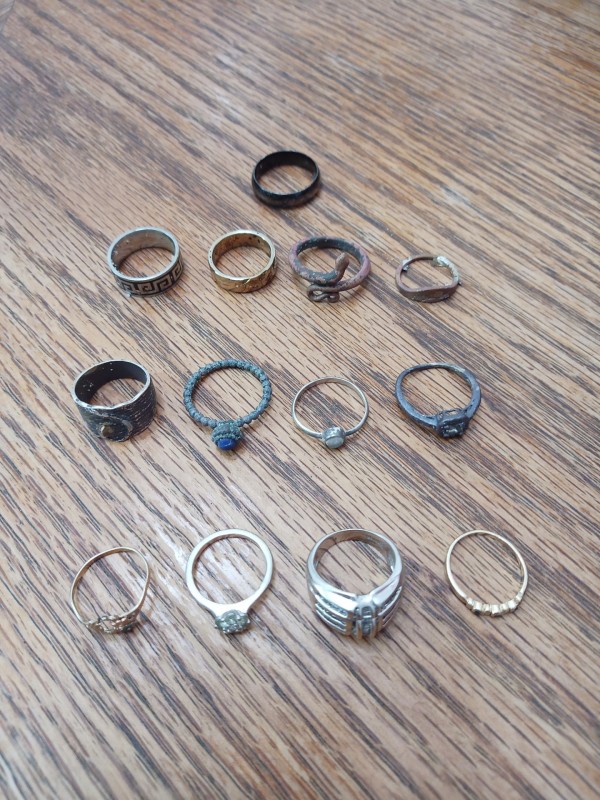
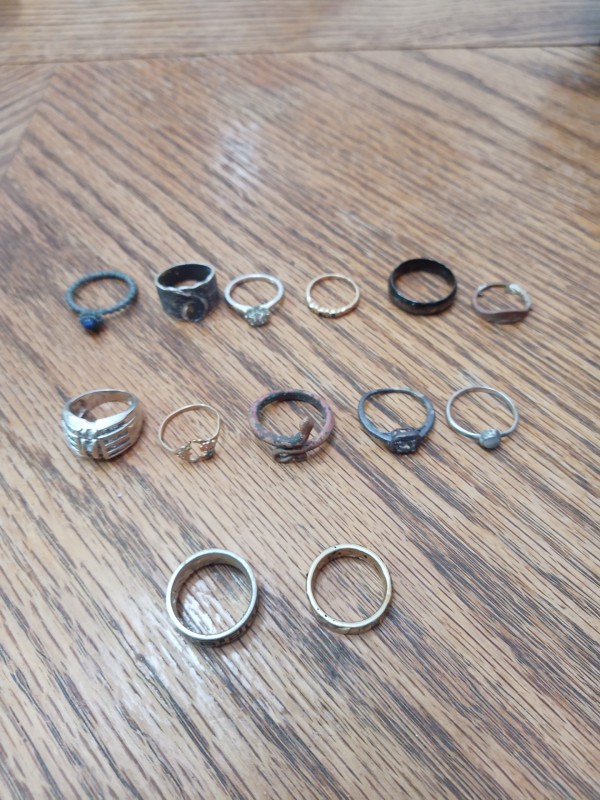
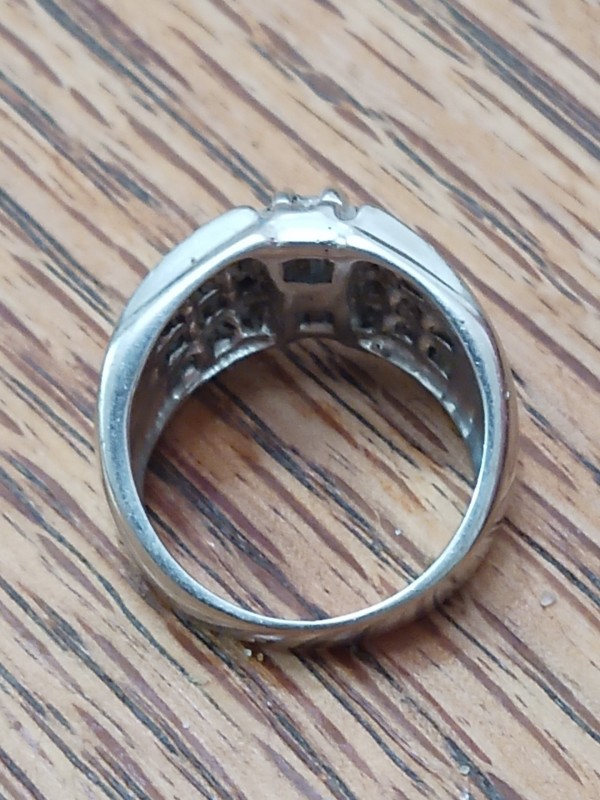
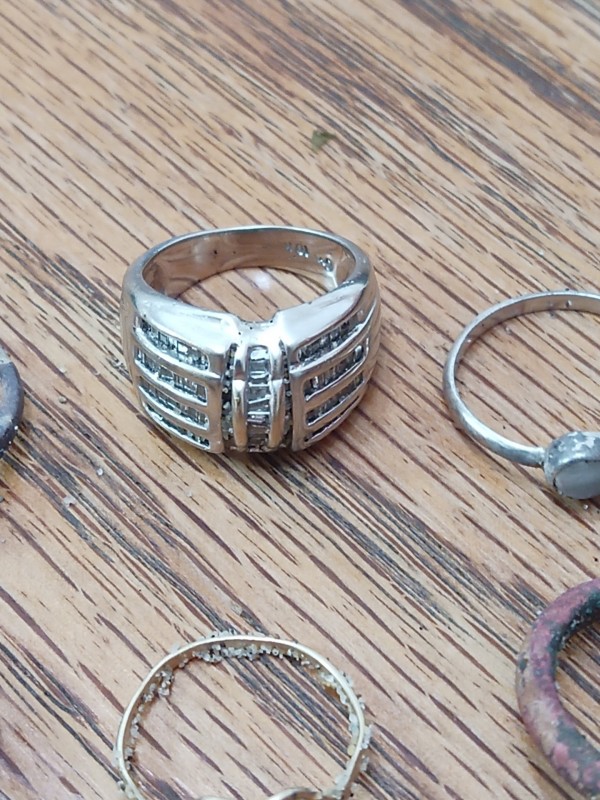
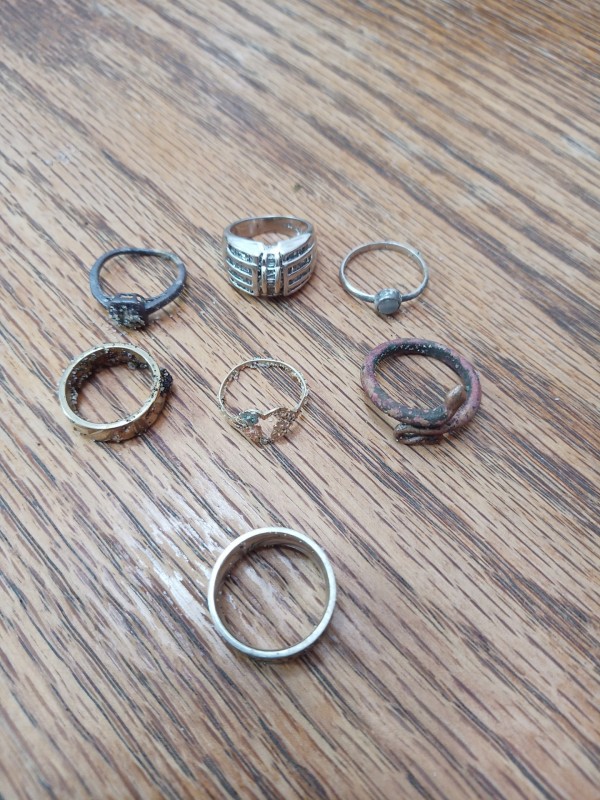
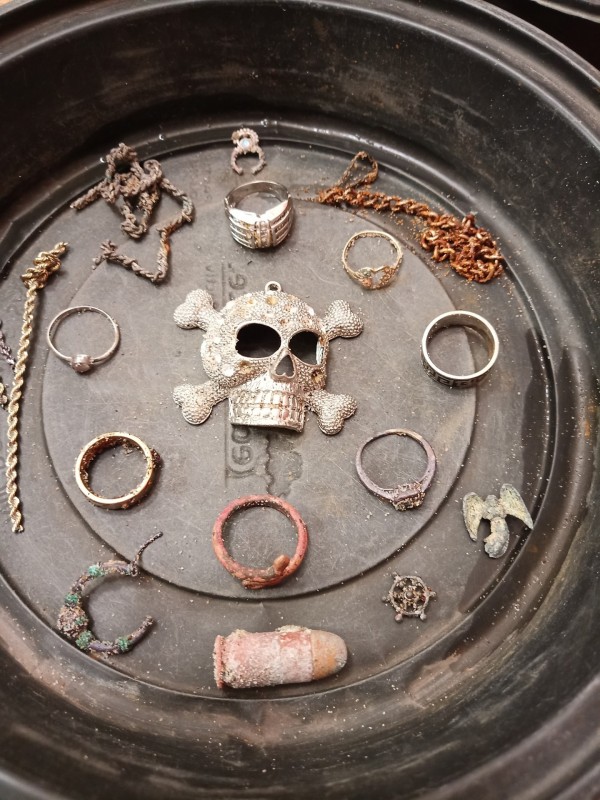
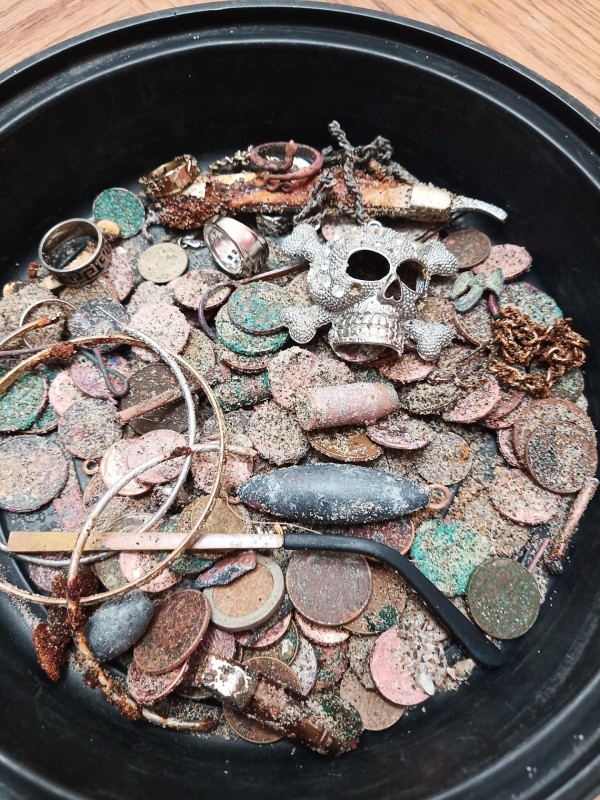
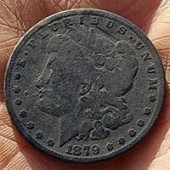
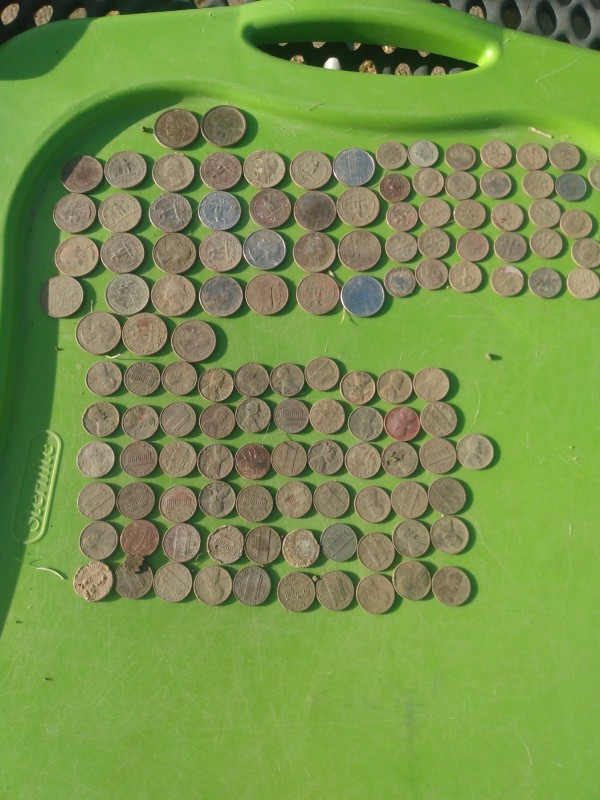
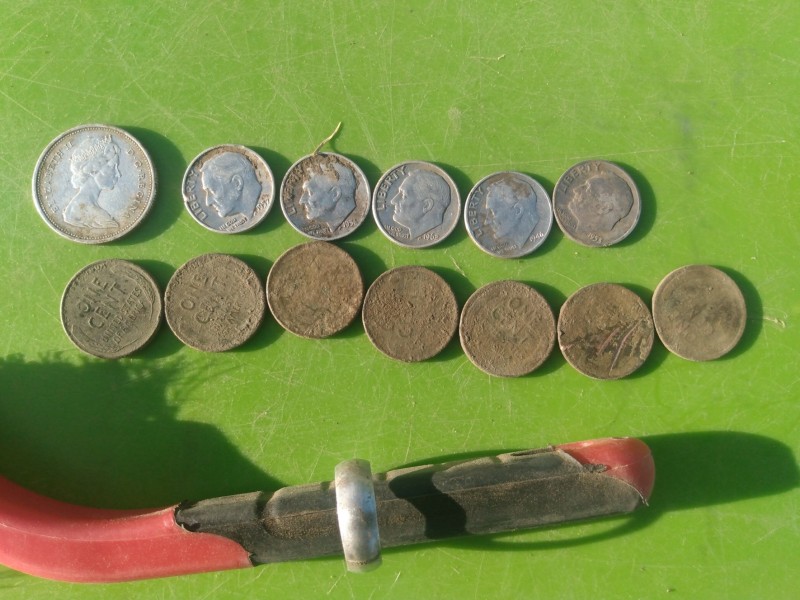
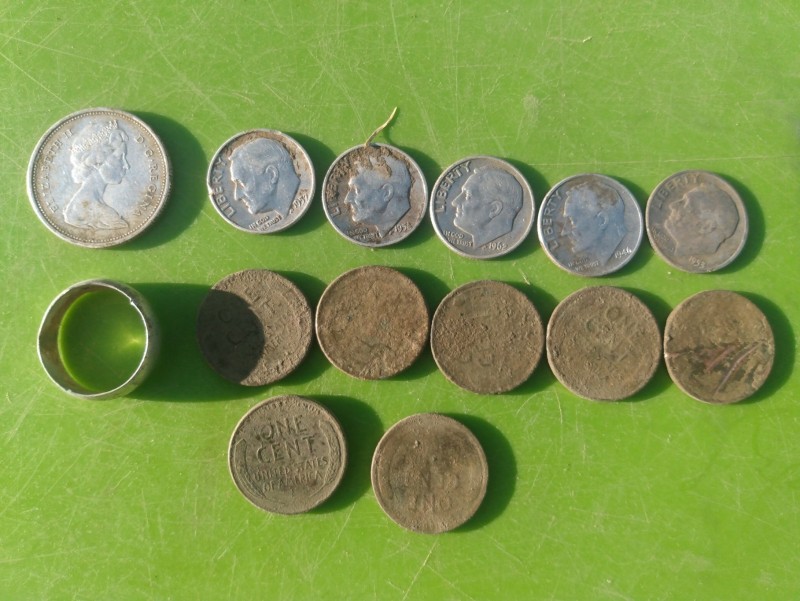
.thumb.jpg.d71314a45f3dc82bf75ac1b96e7e9201.jpg)
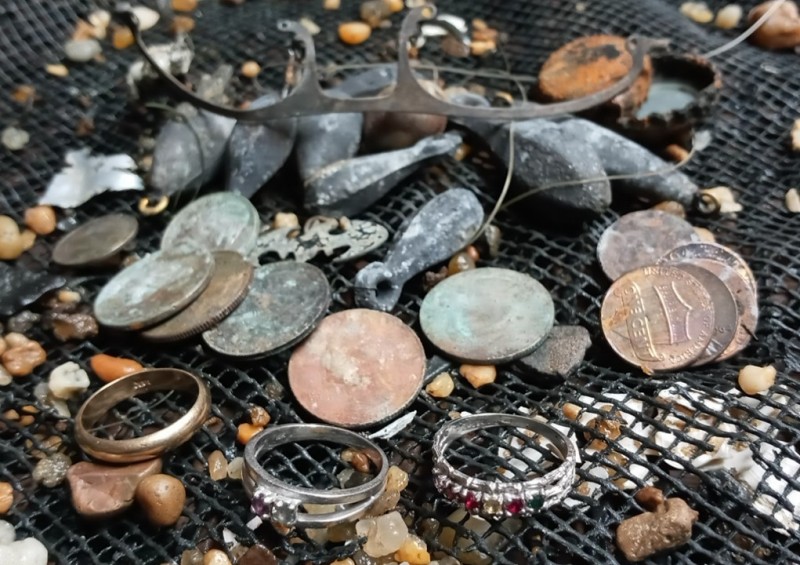


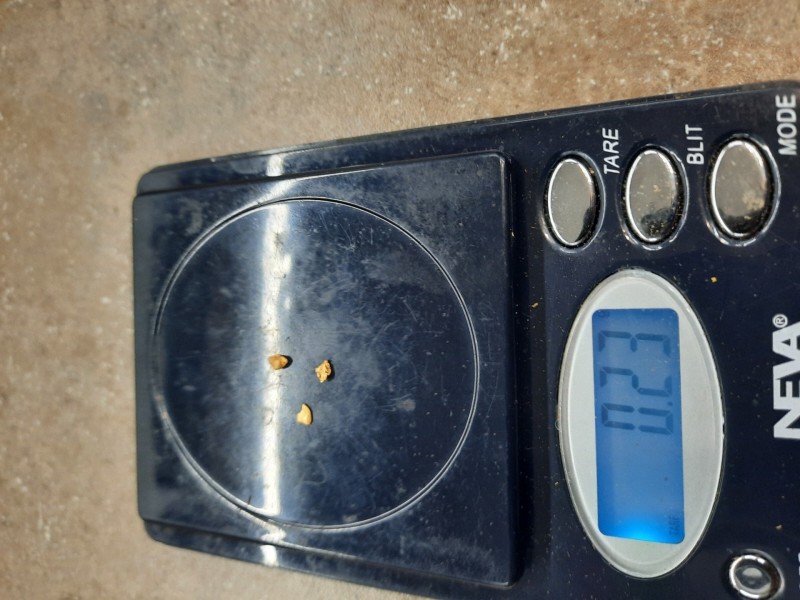
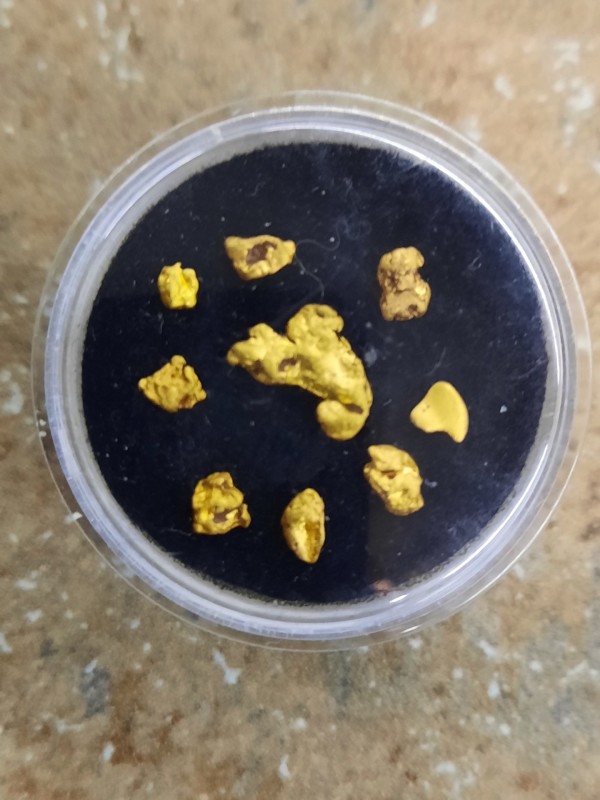
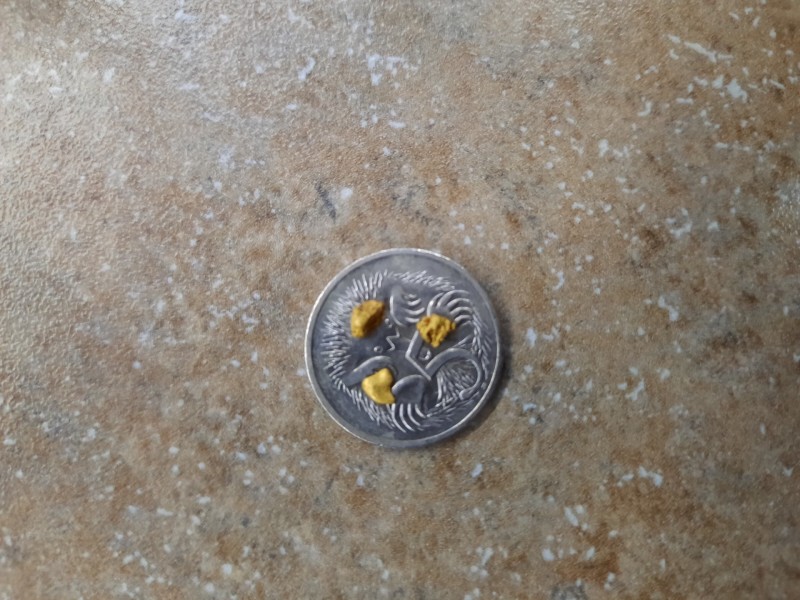


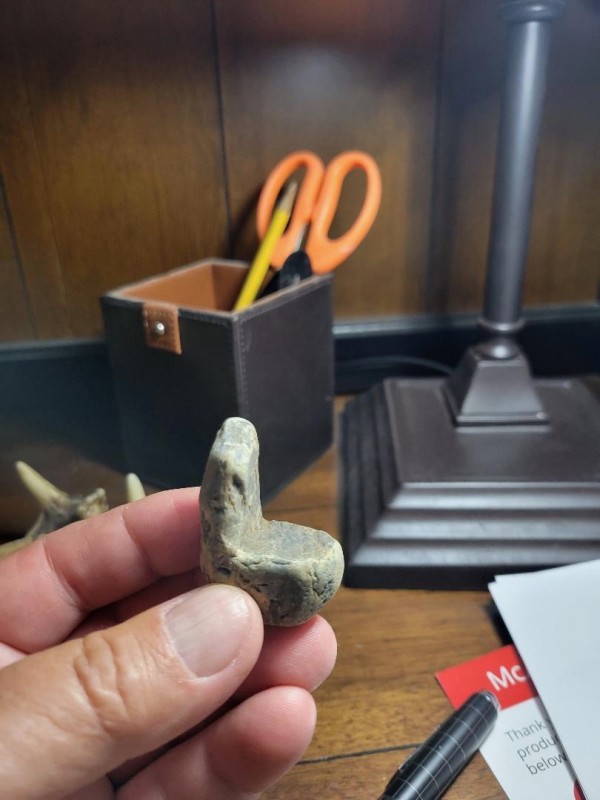
.thumb.jpg.8761b3d9b3da119b9e6d1912f67275ad.jpg)
